Organizing the Guided Pathways Work
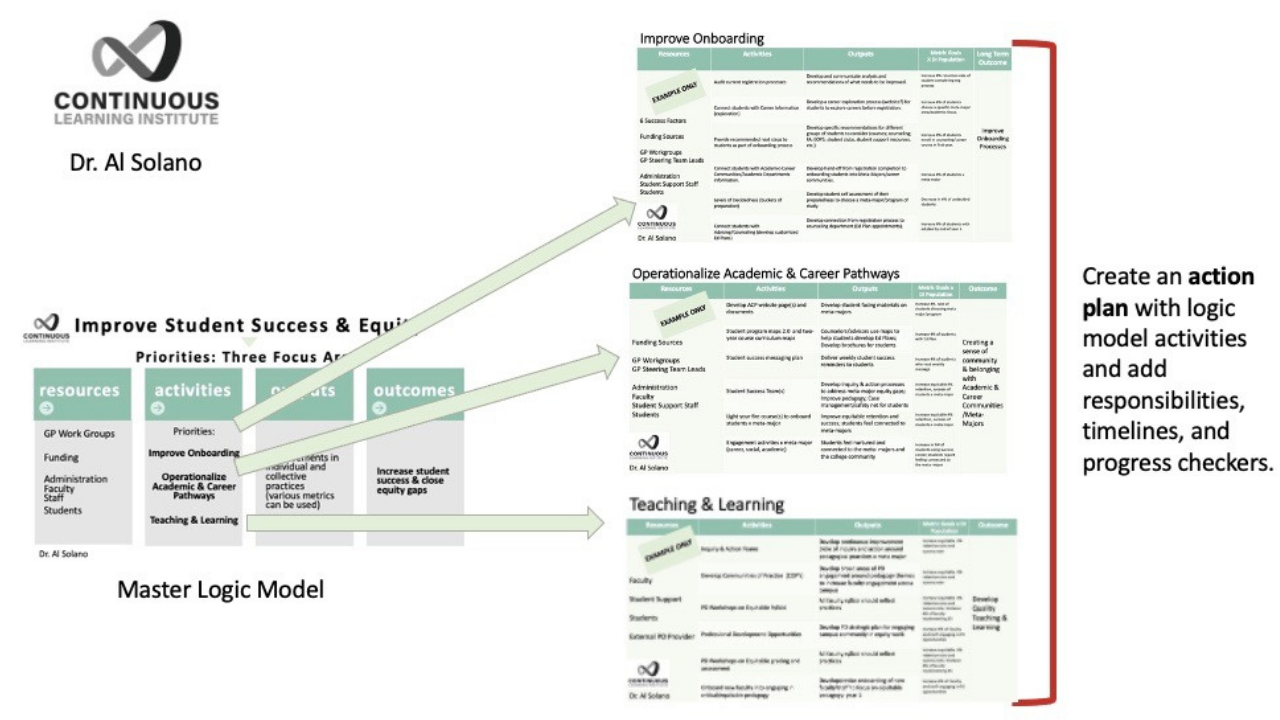
Guided Pathways is a culture-changing framework. Therefore, it's extremely difficult to implement. To work smarter and not harder, I help colleges organize the work into three focus areas: onboarding, operationalizing academic & career communities (aka, meta-majors), and teaching and learning. For campuses that are accustomed to the four Guided Pathways pillars, organizing the work with the three focus areas means clarify & enter the path (onboarding), stay on the path (operationalizing academic & career communities), and ensure learning (teaching & learning). To organize the work, I encourage using logic models for each of the three focus areas so that the three respective workgroups (keyword: work), have a method to organize their thinking, track outcomes, activities, and next steps to in order to achieve the "Three C's" I often talk about: Clarity, Coherence, Consensus.
Let's start with the master logic model. The focus areas are under the second column.
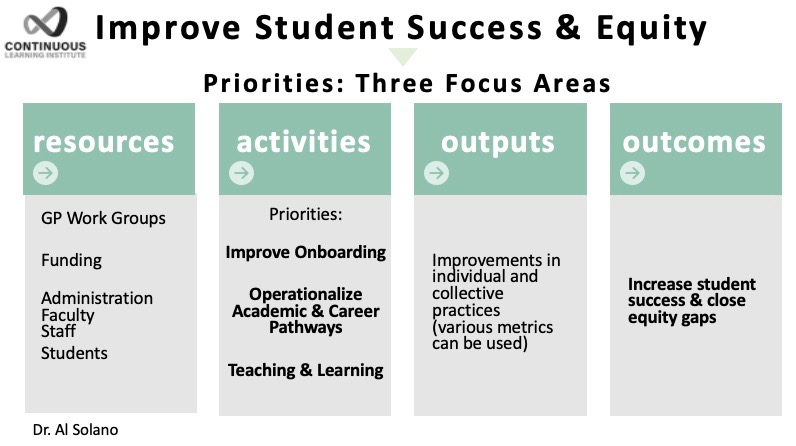
Now let's consider logic models for each of the three focus areas.

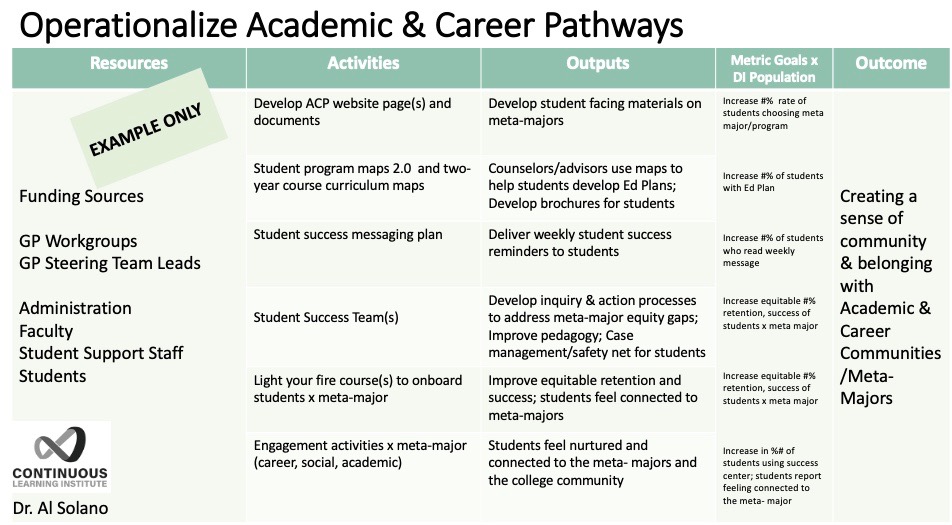
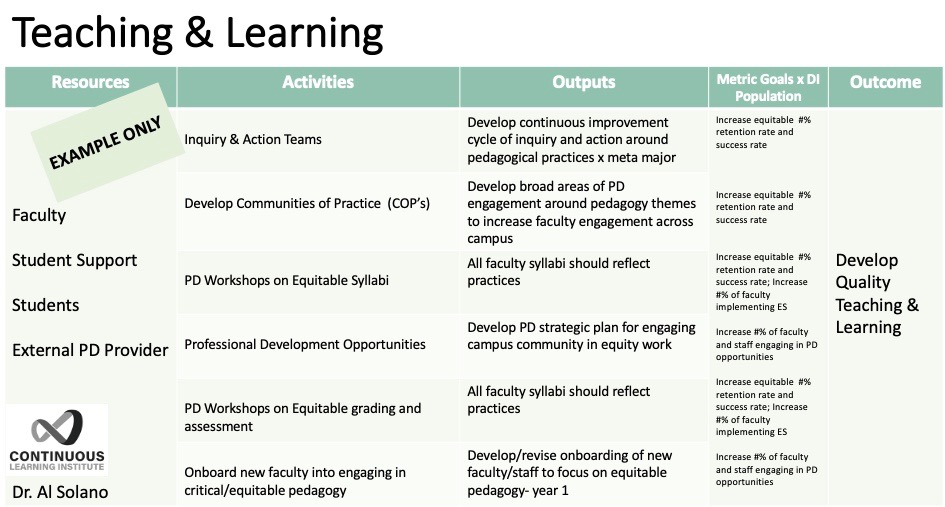
Let's bring it all together. The three logic models on the far right are aligned with the master logic model on the far left. The key is to take these graphic organizers (i.e., logic models) and turn the activities within them into action plans (download an action plan template) with those responsible for getting the work done, by when, and checking for progress.
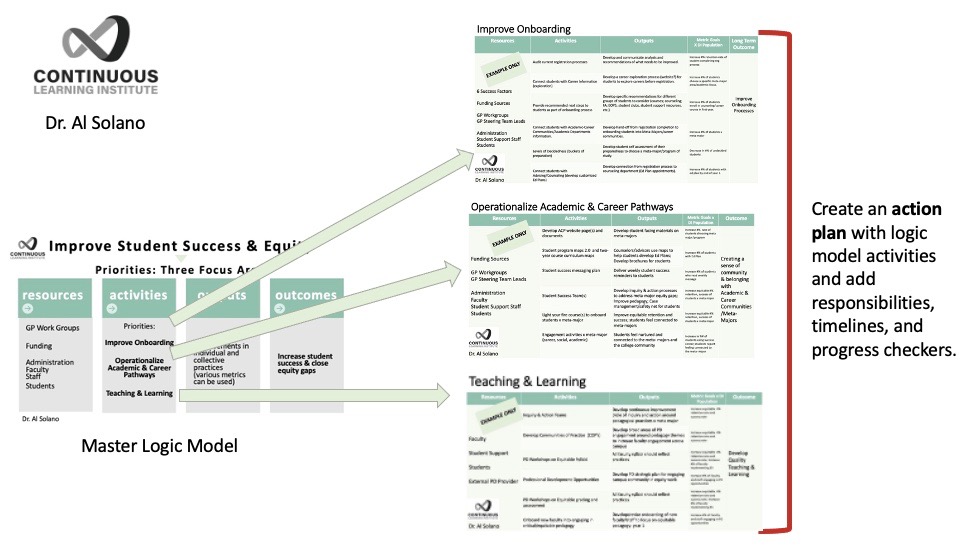
Lastly, ensure to have workgroups focused on the three focus areas. To be clear, the Guided Pathways steering council should include the lead from each focus area team, vice presidents, key deans, faculty, classified professionals, and the Guided Pathways coordinator (if you have one). The council's purpose is to foster integration, collaboration, and collegial problem-solving. It's not the place to plant obstructionists. Information flow goes to college council where it should always include an agenda item for the Guided Pathways work.
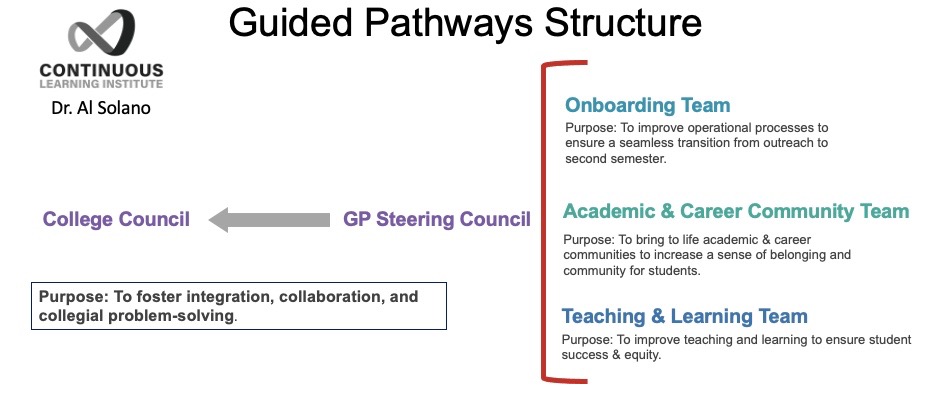
Whether you're starting from scratch or are in need to reorganize the Guided Pathways work, this structure is relatively simple to create and helps the institution have better clarity, coherence, and consensus. The structure also allows for a simpler integration of equity. You have to create a solid, easy-to-understand, and manageable structure to know how the institution will apply an equity lens. There's no exact formula for equity implementation. How equity is applied in Southern California may look different from how it is applied in Central Iowa. But you have to start by doing the work! Do the work with relentless clarity.
[Update: Use these tools to help inform the logic model work.
Initiative Readiness Assessment Tool & Work Gap Analysis/Action Plan Tool]
***
Also visit: Evolution of Guided Pathways with Dr. Davis Jenkins
Note: A special thanks to Dr. Mark Akiyama for helping me to develop the logic models. Also, listen to our conversation about Guided Pathways & equity.






